Wednesday January 6th and Thursday January 7th – The journey to Rhodes began with a 7 AM pickup for the Pittsburgh Airport. The flight schedule to Rhodes was pretty involved. I went from Pittsburgh to Dulles Airport in Washington DC, to Munich, Germany, to Thessaloniki, Greece and then on to Rhodes. The total travel time once I left Pittsburgh was 22-hours. We landed in Rhodes at 3:15 PM on Thursday January 7th. It was a pretty uneventful trip until the Thessaloniki to Rhodes leg. A severe weather system settled over Rhodes and the landing in driving rain and strong winds was interesting to say the least. The gusts were upwards of 50 miles per hour and the sheets of rain were being blown completely horizontal. We picked up the rented 9-passengar van and were off to the hotel. Last January we stayed at the Savoy Hotel which was right in the middle of the new part of the city, so essentially we were right downtown. This year we are staying at the Semiaris City Hotel very near the famed beaches of Rhodes. Rhodes is the most popular summer tourist destination in Europe. Since it is winter now, most of the businesses and hotels are closed and the city is not deserted, but only about 5% of the populations that will be present in summer are present in winter. Below is a shot of one of the better known beaches, deserted now because of winter. The weather, besides the rain has been pleasant, with daytime temperatures around 60 degrees F and 52 degrees F at night.
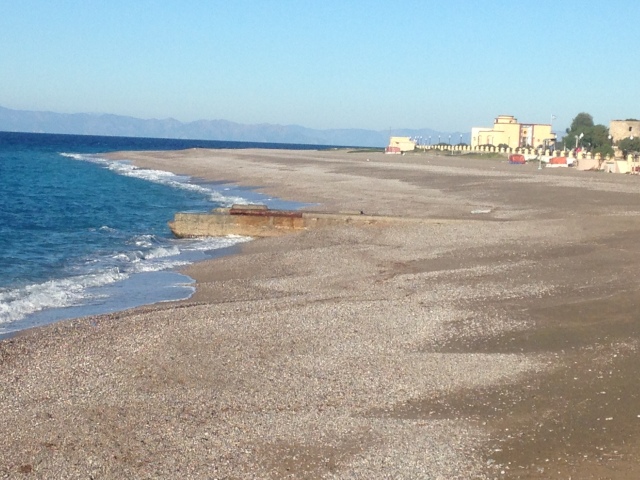
Friday January 8th – Below is a link to the proposal related to what we hope to accomplish during our seven work days on Rhodes.
Today we will continue work we completed last year at Kahal Shalom Synagogue. We completed GPR in the main building of the synagogue last year. We were able to complete about 50% of the area and one of the goals for this year is to complete to other 50%. Pictured below are some of the student technicians that are assisting us with the project. They spent an hour in the morning being trained on how to collect GPR data and jumped right into it after that collecting real-time data for the project. The students are from Stockton University (New Jersey), the University of Wisconsin-Eau Claire, and Clark University (Massachusetts). Like last year, the data sets that are collected are emailed to Dean Goodman at GPR Slice, a private company in Los Angeles that reduces and manipulates GPR data. About 24-hours later, the plots created from the data sets are emailed back to us so we can see what the GPR has revealed beneath the present-day floor. The version of the Kahal Shalom Synagogue we are working in now was rebuilt after World War II. It was not destroyed in the war by allied bombing, but it was greatly damaged. The theory we are working under is that the precursor to this present-day structure was from 1854. That version of Kahal Shalom was partially or totally destroyed by a large earthquake in 1854. The pre-1854 version probably dates back to 1710, when it is theorized a 1710 earthquake destroyed or damaged that version of Kahal Shalom. The Kahal Shalom Synagogue was founded on this site in 1577, so the pre-1710 version probably dated to that time. Any building that was on the site of the 1577 synagogue, prior to its construction, was probably destroyed in a 1480 earthquake. Our hope is that GPR will point out some of these underlying levels with a high degree of confidence, and that future excavations will reveal these features.

Another component of the research design is XRF analysis. This x-ray fluorescence analysis differentiates the mineral content in some natural materials. In this case we are using it to determine the mineral content of pottery samples. The data will show similarities and differences in the source materials for the pottery and hence changes in the source materials over time. Pictured below is a student from the University of Wisconsin-Eau Claire using the instrument to analyze pottery shards collected at the old Jewish Cemetery just outside of the walls of the old city. These were analyzed as a dry run for the real intended purpose for the instrument, to analyze the source materials and mineral content for 125 oil lamps now housed in the collection of the Rhodes Archaeological Commission. The analysis of these samples will mark the beginning of what we hope will be a comprehensive data base for the mineral signature of oil lamps in this part of the Mediterranean.
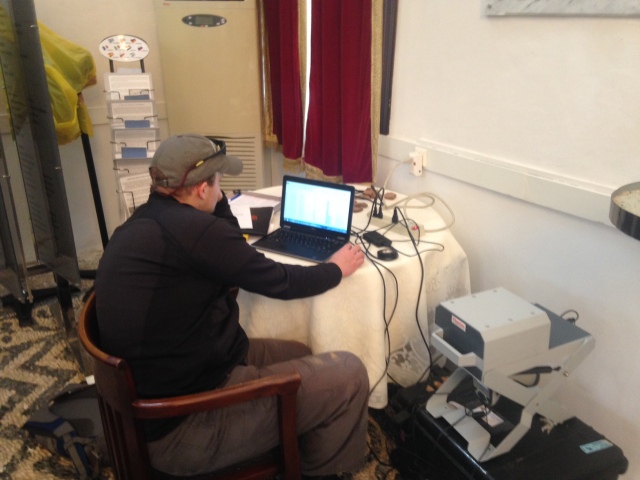
January 9th – Was a Saturday and hence Shabbat for the Jewish members of the team. As has been the case for the many years we have worked together on research projects around the world, we do not work on Saturdays. Some of the team went on a tour of some of the sites of interest around the island. I caught up on sleep and took a long walk (four hours plus) in the afternoon. In the evening we went to a special dinner for our group sponsored by the President of the Rhodes Jewish Community Association. It was a wonderful five course meal at a restaurant/hotel owned by the association’s president. Everything about it was great, accept it did not end until after 11:30 PM, way past our normal bedtime. I did not fall asleep until after 1 AM.
January 10th – It is Sunday morning and the Old City is very quiet. We slept in a bit because of the late night and did not get up until 7 AM. We are once again working at Kahal Shalom. On Friday we collected GPR data using the 250 mhz antennae which give a decent resolution, and today the data will be collected in the same area using the 450 mhz antennae which will provide much higher resolution and hence more detail of the features underlying the current floor of the synagogue. Also, overnight, the data plots arrived via email from Dean at GPR Slice. They are included below. The first two are all the slices of data. In the upper left as you look at the plot you are looking at the near surface materials. As you move to the right you are looking progressively deeper. There are several features in these plots that stand out as possible anomalies and hence structures that might exist beneath the current floor.
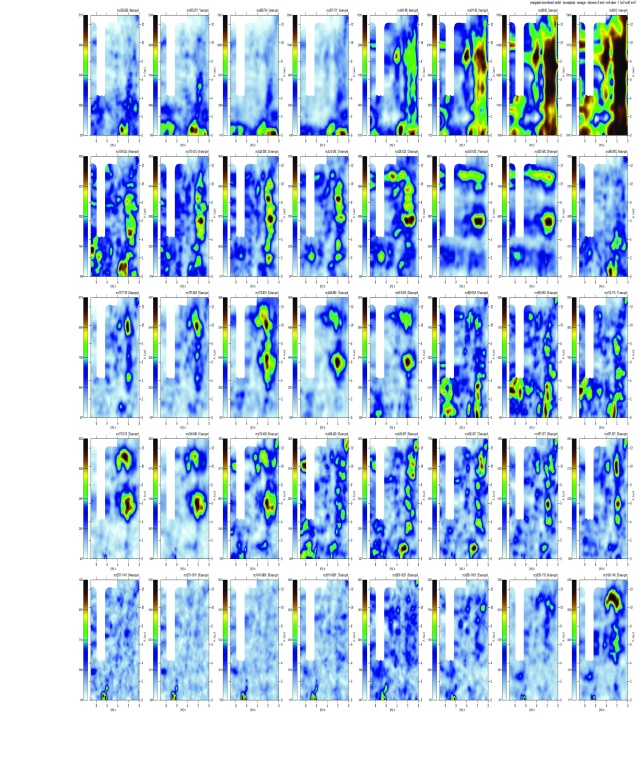

To get even a better representation of what might be below the floor a 3-D plot was created. That is included below. Although the data is arranged in 3-D, because it is being displayed on a computer screen, it only appears in 2-D. Even though it is in 2-D, the subsurface features still clearly standout. The other plot that is included is a composite plot. In this case the software removes all the noise and interference and accentuates what it interprets as the good signals. In this plot, the darker areas may represent features that are under the floor.
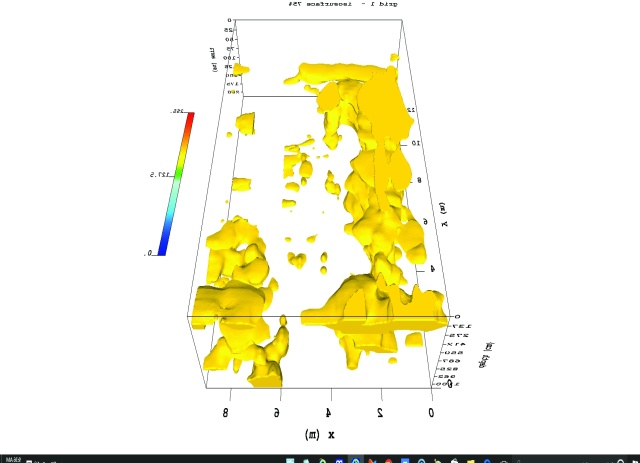
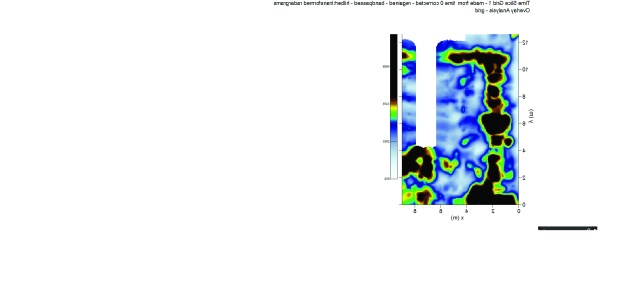
Lastly for today, we are thinking about one of our sub-projects for later in the week. We are still waiting for permission, but we hope to do some exploratory reconnaissance near the Rhodes Acropolis. The reason for this exploration is to finds sites for eventual data collection to answer the question: Where was the Colossus of Rhodes actually located? There are three current theories. One states that it was in the vicinity of the acropolis; one states that it was at the port; and one states that it was located at what is now the site of the Grand Masters Palace. We hope to begin to collect some data regarding the location of the base of the Colossus. The statue itself, which stood about 100 feet tall and was covered with bronze, was destroyed centuries ago, but it is theorized that the base remains behind, somewhere in the vicinity of the Old City of Rhodes. The photo below shows the top of the Acropolis of Rhodes.
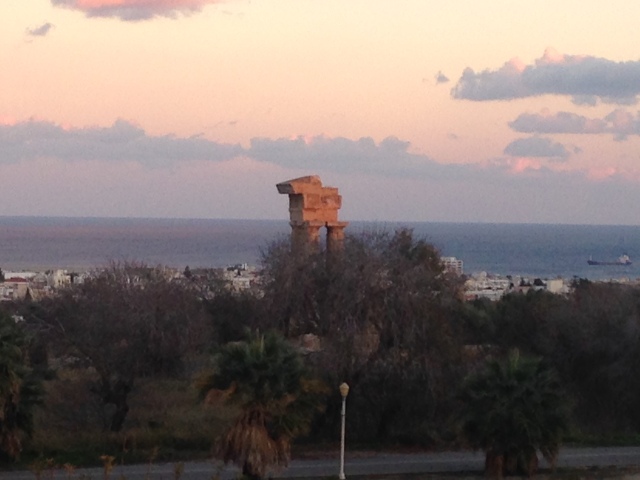
In closing, an article appeared in the local newspaper on Rhodes about our return and our new program of research. It was of course written in Greek. We are having it translated and when ready I will add it to the blog. That’s all for now.
